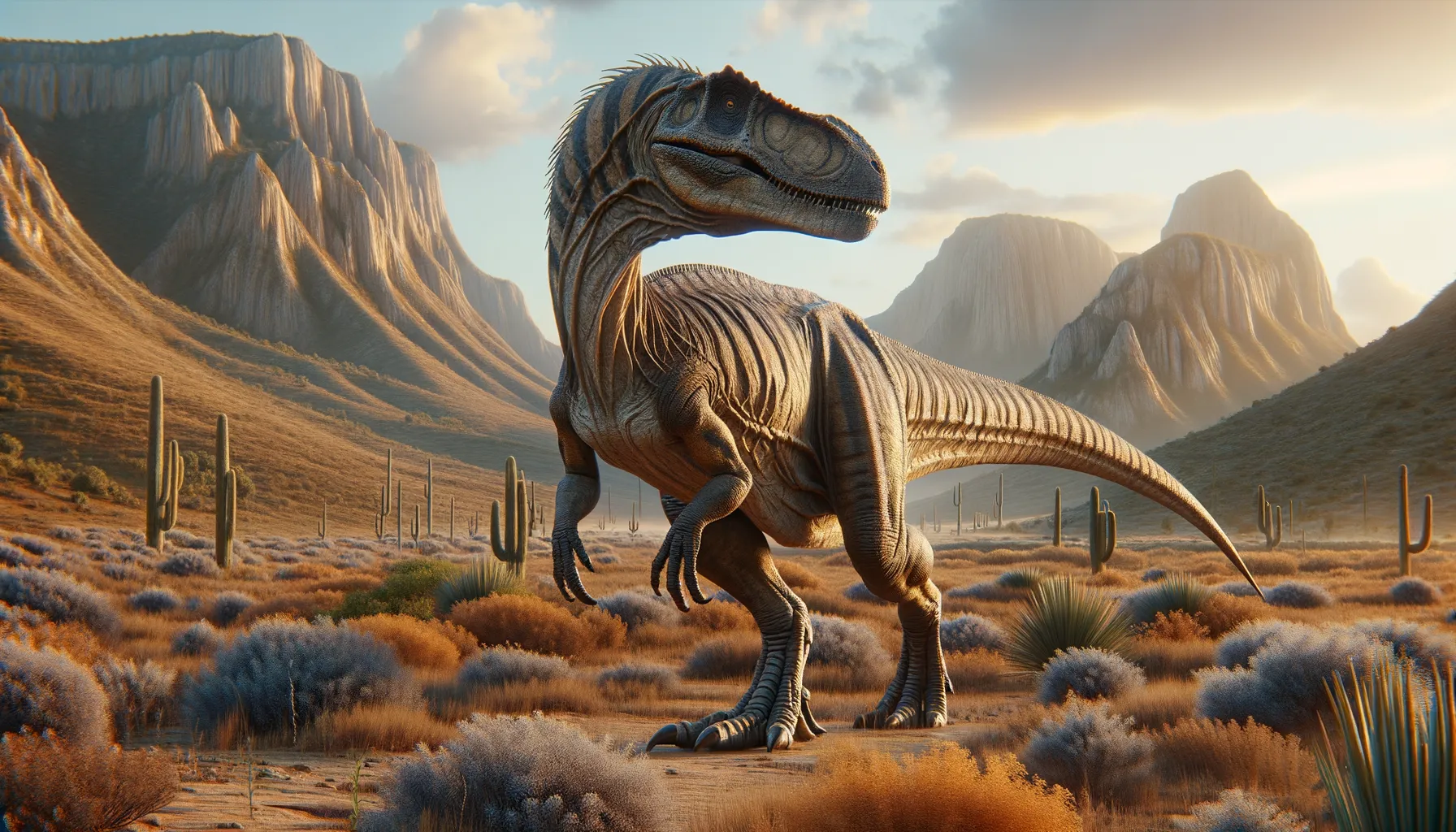
Concavenator
The humped dinosaur of Cretaceous Spain.
Period
Cretaceous
Length
Approximately 6 meters (20 feet) long.
Height
Roughly 2 meters (6.5 feet) tall.
Weight
Around 600 kg (1,300 lbs).
Concavenator was a unique theropod dinosaur that lived during the early Cretaceous period. It was discovered in Spain and is known for a distinctive hump-like structure on its back. This carnivore is particularly interesting to paleontologists because of its connection to both dinosaurs and modern birds. Its partially preserved fossils have provided insights into its anatomical features and raised intriguing questions about the evolution of later theropods.
Diet
Concavenator was carnivorous, likely preying on small to medium-sized animals. Its diet would have included mammals, smaller dinosaurs, and possibly fish. Its teeth and jaw structure suggest it was well-adapted for a predatory lifestyle.
Hunting
Concavenator likely hunted alone, relying on its keen senses to track down prey. It may have used ambush tactics, taking advantage of its environment to surprise its quarry. Given its moderate size, it could have pursued moderately fast prey but would have been cautious around larger dinosaurs.
Environmental challenges
Concavenator lived in a dynamic environment with changing climates and ecosystems. Periodic droughts and varying temperatures would have affected food availability. It also faced competition with other predators and had to adapt to maintain its niche. The biodiversity fluctuations in its habitat meant it needed versatile hunting strategies and a flexible diet.
Speed
Moderate, likely average for a theropod of its size.
Lifespan
Estimated to be around 10 to 20 years.
First discovery
Discovered in 2003 in Las Hoyas, Spain.
Fun Facts
- Concavenator is known for a distinctive hump or sail on its back, which is quite unusual among dinosaurs.
- This dinosaur lived in what is now Spain about 130 million years ago during the Early Cretaceous period.
- Concavenator was a carnivorous theropod, meaning it was a meat-eating dinosaur walking on two legs.
- The name 'Concavenator' translates to 'hunter from Cuenca,' which refers to the location where it was discovered in Spain.
- One of the surprising features of Concavenator is the evidence suggesting it might have had quill-like structures on its arms, hinting at a possible connection to the evolution of feathers.
- Concavenator's unique back feature and possible protofeathers make it an interesting subject for studies on dinosaur diversity and evolution.
- It was roughly 6 meters long, equating to about the length of a large car, making it a medium-sized predator for its time.
Growth and Development
Concavenator hatched from eggs and underwent significant growth during its juvenile stages. This growth required a consistent supply of nutrients, demanding effective hunting strategies from a young age. Juveniles likely relied on concealment to avoid predators before achieving their full size. As they matured, their unique back structure became more pronounced.
Habitat
This dinosaur lived in a region that once comprised swampy and forested areas, as well as open spaces. The presence of water bodies meant that it also likely interacted with aquatic ecosystems. This habitat offered a mix of prey species and environmental resources, supporting a diverse range of life forms. Its environment was rich in vegetation, providing cover and camouflage.
Interaction with other species
Concavenator probably encountered various dinosaur species, mammals, and birds in its habitat. Competition with other carnivores would have influenced its hunting territory and dietary choices. These interactions played a role in shaping its behavioral adaptations and social dynamics. It may have used display features, such as its back hump, in interactions with other dinos.
Natural lifespan
Its lifespan was likely between 10 and 20 years.
Reproduction
Concavenator laid eggs, much like other theropods, in clutches. After laying, the eggs would be buried or covered for protection. Parental care might have been minimal, with hatchlings being relatively independent from a young age. The survival of the young relied heavily on developing essential skills quickly.
Social behaviour
Concavenator's social behavior might have been limited, with possible solitary hunting strategies. However, it might have grouped during certain times, such as seasons of plentiful food. Displays using their hump might have played a role in intraspecies communication. Its social interactions contributed to establishing hierarchies or territories.
Fossil locations
Fossils of Concavenator have been predominantly found at the Las Hoyas locality in Spain. The preservation quality provides a detailed look into its anatomy. These findings have been crucial for understanding its phylogenetic relations. The fossils are a key component of early Cretaceous ecosystems studies from the region.
